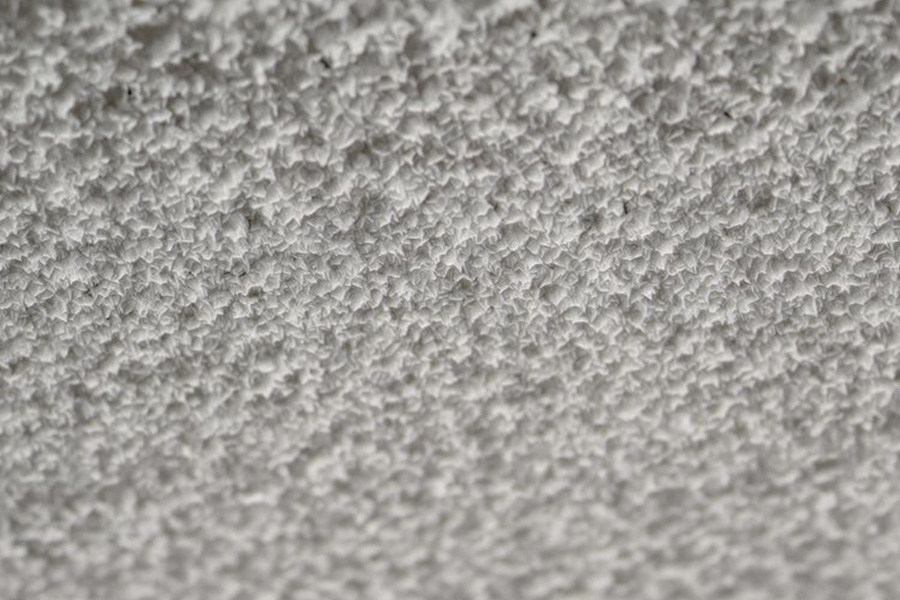Basics of Asbestos

What Is Asbestos and Where Is It Found?
Asbestos is a naturally occurring mineral made up of tiny, fibrous crystals. For decades, it was widely used in construction and manufacturing due to its resistance to heat, fire, and chemicals. You might find asbestos in older homes, particularly in materials like insulation, ceiling tiles, and cement. One of the key risks of asbestos is its ability to break into microscopic fibers that can easily become airborne. When inhaled, these fibers can settle in the lungs and cause long-term health problems.
Common Uses of Asbestos in Homes
Historically, asbestos was a go-to material for builders. It was commonly used in:
- Insulation for pipes, boilers, and attics.
- Ceiling and floor tiles.
- Roofing materials and shingles.
- Adhesives and sealants.
While its use has declined significantly, many homes built before the 1980s still contain asbestos. If you’re renovating an old house, it’s essential to check for asbestos-containing materials to avoid accidental exposure. Ignoring this step could lead to serious health risks, much like skipping necessary steps in addiction rehab can lead to setbacks.
Why Asbestos Was Widely Used
The widespread use of asbestos wasn’t random. Its unique properties made it highly desirable for various applications, especially in construction. Asbestos is:
- Heat-resistant, which made it ideal for fireproofing.
- Durable and long-lasting.
- Easily mixed with other materials like cement or plaster.
Back then, people didn’t fully understand the dangers of asbestos exposure. Much like outdated approaches in addiction rehab, the consequences only became clear after years of harm. Today, we know better and have strict regulations to limit its use and ensure safety.
Health Risks Associated With Asbestos Exposure
How Asbestos Affects the Lungs
When asbestos fibers are inhaled, they can travel deep into the lungs and lodge themselves in the lung tissue. Over time, this can lead to scarring and inflammation, which interfere with normal lung function. Even minimal exposure to airborne asbestos fibers can be harmful, as the body cannot easily expel these microscopic particles. Asbestos doesn’t make you cough or sneeze right away, so you might not even realize you’ve been exposed until years later.
Diseases Linked to Asbestos Exposure
Exposure to asbestos has been conclusively linked to several serious diseases, including:
- Asbestosis: A chronic condition where lung tissue becomes scarred, making it difficult to breathe.
- Mesothelioma: A rare and aggressive cancer that develops in the lining of the lungs or abdomen.
- Lung Cancer: Often caused by prolonged exposure, especially in smokers who are already at higher risk.
- Other potential risks include cancers of the digestive system, such as colon cancer, though these links are less common.
For more information on the illnesses caused by asbestos, check out asbestos-related diseases.
The Role of Fiber Size and Shape in Health Risks
Not all asbestos fibers are created equal, and their size and shape play a role in how dangerous they are. Thin, needle-like fibers are more likely to penetrate deep into the lungs and remain trapped there. The longer and more frequent the exposure, the higher the risk of developing severe health issues. Even small amounts of exposure can lead to mesothelioma, a disease that may not appear until decades later. The type of asbestos fiber also matters, with some forms being more easily inhaled than others. For details on related lung conditions, read about benign lung diseases caused by asbestos.
Identifying Asbestos in Your Home
Signs of Asbestos-Containing Materials
Recognizing materials that might contain asbestos can be tricky, as they often look similar to harmless substances. Common indicators include materials that were installed before 1990, such as insulation, floor tiles, or pipe wraps. If you notice materials that are fraying, crumbling, or breaking apart, it’s a red flag that they may contain asbestos. However, it’s important to remember that you can’t confirm asbestos just by looking. Testing is the only way to be certain.
Common Locations of Asbestos in Older Homes
Asbestos was widely used in various parts of homes built before the 1990s. Some common areas where it may still be found include:
- Insulation materials around hot water pipes, furnaces, or boilers.
- Cement sheets and roofing materials.
- Vinyl floor tiles and adhesives.
- Textured paints and coatings on walls or ceilings.
If your home has vermiculite loose-fill insulation, often found in attics, it might contain asbestos. This insulation is characterized by tiny pebble-like pieces that are gray-brown or silver-gold in color. Learn more about vermiculite insulation.
When Asbestos Becomes a Health Hazard
Asbestos is most dangerous when it becomes airborne. This happens when materials containing asbestos are disturbed, such as during renovations, sanding, or drilling. Once the fibers are released into the air, they can be inhaled and lodge in the lungs, leading to serious health risks over time. To minimize danger, it’s best to leave undisturbed materials alone and consult a professional if you suspect asbestos in your home.
Who Is Most at Risk of Asbestos Exposure?
Occupational Risks and High-Risk Professions
Certain jobs expose workers to higher levels of asbestos, especially those in industries like construction, shipbuilding, and manufacturing. Workers handling insulation or demolishing older buildings face significant risks if proper safety measures aren’t followed. Surprisingly, even mechanics working on older vehicles may encounter asbestos in brake pads or clutches. These professions require strict adherence to safety protocols to minimize exposure.
Family Members of Asbestos Workers
The danger doesn’t stop at the job site. Family members of workers can unintentionally come into contact with asbestos fibers brought home on clothing, shoes, or tools. This secondary exposure, though less direct, can still lead to severe health issues over time. For this reason, many workplaces now require employees to change clothes or shower before leaving the facility.
Residents of Older Homes and Buildings
People living in homes built before the 1990s are at risk of exposure if asbestos-containing materials (ACMs) are disturbed. This could happen during renovations, repairs, or even natural wear and tear. Common areas where asbestos might be found include floor tiles, pipe insulation, and roofing materials. If these materials remain intact, they pose little risk. However, once they start to crumble, the fibers can become airborne, increasing health hazards.
In all these scenarios, awareness and proactive measures are key. Whether in a high-risk job, a rehab facility, or an older home, understanding where asbestos might lurk and how to handle it safely can make a critical difference.
How Asbestos Enters the Air and Your Lungs
The Process of Asbestos Fiber Release
Asbestos fibers are released into the air when materials containing asbestos are damaged, disturbed, or deteriorate over time. This could happen during renovations, demolitions, or even natural wear and tear. When asbestos-containing products are broken or crushed, they don’t create visible dust. Instead, they break into microscopically thin fibers that are too small to see or feel. These fibers can remain airborne for extended periods, increasing the risk of inhalation.
Airborne Asbestos and Its Dangers
Once airborne, asbestos fibers can travel throughout an environment, making them easy to inhale. Breathing in these fibers is dangerous because they are sharp and durable, allowing them to penetrate deeply into the lungs. Unlike ordinary particles, asbestos fibers don’t break down or dissolve in the body. Over time, exposure to airborne asbestos can lead to severe health issues, including asbestosis, lung cancer, and mesothelioma.
How Asbestos Fibers Lodge in Lung Tissue
When inhaled, asbestos fibers bypass the body’s natural defense mechanisms due to their tiny size and unique shape. These fibers can embed themselves in the lung tissue or the lining of the lungs, known as the pleura. Once lodged, the fibers cause irritation and scarring, which may not result in immediate symptoms but can develop into life-threatening conditions over decades. The experts at Evoke Wellness emphasize the importance of early detection and minimizing exposure to reduce long-term health risks.
Steps to Minimize Asbestos Health Risks
Conducting a Visual Inspection for Asbestos
If you suspect asbestos in your home, start with a careful visual inspection. Look for materials like insulation around pipes, old floor tiles, or textured ceilings that could potentially contain asbestos. Avoid touching or disturbing these materials, as this can release harmful fibers into the air. Remember, asbestos-containing materials that are intact and undisturbed usually do not pose a risk.
When to Consult an Asbestos Removal Expert
When asbestos-containing materials are damaged or deteriorating, it’s time to bring in a professional. Certified asbestos removal experts have the tools and knowledge to handle the material safely. Attempting to handle it yourself can increase the risk of exposure. For instance, if insulation around pipes is breaking apart, consulting a professional is the safest course of action.
Safe Practices for Handling Asbestos
If you must handle asbestos or suspect exposure, use protective measures to minimize risks:
- Wear disposable gloves and a mask rated for asbestos protection.
- Wet the material slightly to reduce the release of fibers.
- Seal off the area to limit airborne contamination.
For outdoor activities, wetting the ground before gardening or paving walkways can help reduce exposure to toxic asbestos dust. Learn more about these precautions. Always prioritize safety by limiting direct contact and hiring experts when necessary.
The Long-Term Effects of Asbestos Exposure
Latency Periods for Asbestos-Related Diseases
Diseases caused by asbestos exposure often take years, even decades, to surface. This delay, known as the latency period, can range from 10 to 40 years depending on factors like the extent of exposure and overall health. This long latency makes early detection incredibly difficult. During this time, the fibers lodged in lung tissue silently cause damage, potentially leading to serious conditions later in life.
Why Early Detection Is Challenging
One of the major hurdles in addressing asbestos-related illnesses is the lack of symptoms during the latency period. People often don’t realize they’ve been affected until the disease has progressed significantly. Chest tightness, shortness of breath, or persistent coughing might appear only after irreversible damage has occurred. Regular health monitoring, especially for those with known exposure, is crucial but not always practiced.
The Irreversible Nature of Asbestos Diseases
Once asbestos fibers embed themselves in lung tissue, the damage they cause cannot be undone. Conditions like asbestosis, lung cancer, and mesothelioma are permanent and, in many cases, fatal. While treatments can help manage symptoms or slow disease progression, they cannot reverse the underlying damage caused by these fibers. This underscores the importance of prevention and minimizing exposure whenever possible.
Testing and Diagnosing Asbestos Exposure
Common Tests for Asbestos Exposure
When it comes to identifying asbestos exposure, there are a few medical tests that can help. A chest X-ray, for example, doesn’t show asbestos fibers directly but can reveal early signs of lung damage caused by them. Other tools like lung scans and CT scans are also useful for spotting changes in lung tissue. These tests help doctors assess whether asbestos exposure has started to impact a person’s health.
The Role of Chest X-Rays and Lung Scans
Chest X-rays are one of the most common diagnostic tools for asbestos-related conditions. While they can’t detect the asbestos fibers themselves, they’re excellent at identifying scarring or other abnormalities in the lungs. CT scans, on the other hand, provide a more detailed image, making it easier to locate early signs of diseases like asbestosis or mesothelioma. These scans are particularly helpful for people with a history of exposure, such as those living in older homes or working in high-risk jobs.
Limitations of Current Diagnostic Methods
Unfortunately, diagnosing asbestos exposure isn’t always straightforward. Many of the symptoms take years—sometimes decades—to appear. This delay makes early detection challenging. Moreover, no test can definitively confirm the presence of asbestos in the body. Instead, doctors rely on a combination of imaging tests and a patient’s exposure history to make an educated diagnosis. This is why seeking medical advice from trusted sources, like Serenity at Summit, is essential if you suspect asbestos exposure.
Regulations and Guidelines for Asbestos Safety
Government Standards for Asbestos Levels
Government agencies have established strict standards to regulate asbestos exposure. These standards often specify the maximum allowable asbestos fiber concentrations in the air to safeguard public health. For example, the Public Buildings Service mandates compliance with asbestos management protocols to protect occupants in federal buildings. These regulations help ensure that asbestos-containing materials (ACMs) are identified and managed safely, especially during renovations or demolitions.
Legal Requirements for Asbestos Removal
Removing asbestos is not just a safety concern; it’s a legal one. Many jurisdictions require certified professionals to handle asbestos removal projects. This ensures that the process complies with safety standards and minimizes airborne fiber release. In 2019, a final rule was introduced to ban certain uses of asbestos, further tightening restrictions on its handling and disposal. Homeowners and contractors alike must be aware of these laws to avoid penalties and safeguard health.
The Importance of Compliance in Renovations
Renovation projects in older buildings can disturb asbestos-containing materials, releasing fibers into the air. Compliance with asbestos safety guidelines is vital to prevent exposure. This includes conducting pre-renovation inspections to identify ACMs and following proper removal and disposal procedures. Adhering to these guidelines not only protects workers and occupants but also aligns with legal and environmental standards.
The Importance of Professional Asbestos Removal
Why DIY Asbestos Removal Is Dangerous
Removing asbestos yourself might seem like a way to save money, but it’s a risky move. Asbestos fibers are microscopic and can easily become airborne during removal. Once inhaled, they lodge in the lungs, leading to serious health problems like asbestosis or mesothelioma over time. Even a small mistake can release dangerous amounts of fibers into the air. Without the right equipment and training, handling asbestos is not just unsafe—it’s potentially life-threatening.
How Professionals Ensure Safety
Licensed asbestos removal experts follow strict protocols to ensure the process is safe and effective. They use specialized tools, protective gear, and containment measures to minimize fiber release. Here’s what professional removal typically involves:
- Inspection and Testing: Professionals identify asbestos-containing materials and assess their condition.
- Containment: They seal off the area to prevent fibers from spreading to other parts of the home.
- Safe Removal: Using approved methods, they carefully remove and dispose of the asbestos materials in compliance with regulations.
These steps not only protect the workers but also safeguard the health of the household.
Costs and Benefits of Hiring Experts
Hiring professionals for asbestos removal might seem costly upfront, but the long-term benefits far outweigh the expense. Proper removal reduces the risk of exposure and ensures compliance with local safety laws, which is especially important during home rehab projects. Additionally, professional removal protects property value by addressing potential hazards thoroughly. In the end, the peace of mind is worth every penny.
Preventing Asbestos Exposure in Renovations
Precautions Before Starting Renovations
Before starting any renovation project, especially in homes built before 1990, it’s essential to take specific precautions. Asbestos can be hidden in materials like insulation, floor tiles, and even plaster walls. Disturbing these materials without proper measures can release harmful fibers into the air. Begin by conducting a thorough visual inspection. If you suspect the presence of asbestos, avoid touching or disturbing the material. Instead, consult a professional for testing and guidance.
Identifying Asbestos-Containing Materials
Not all materials in older homes contain asbestos, but it’s better to err on the side of caution. Common areas to check include:
- Insulation around hot water pipes and furnace air ducts.
- Vinyl floor tiles and adhesives.
- Roofing shingles and siding.
Identifying asbestos visually can be challenging, as it often looks like other materials. A professional assessment is the safest route to confirm its presence.
Hiring Certified Asbestos Inspectors
When dealing with potential asbestos, hiring a certified asbestos inspector is critical. These professionals are trained to safely collect and test samples. They’ll also provide advice on whether the material can remain undisturbed or requires removal. Attempting to handle asbestos yourself can lead to dangerous exposure. For more information on safety regulations, refer to asbestos-related laws and regulations enforced by federal agencies.
The Global Impact of Asbestos Use and Bans
Countries With Active Asbestos Bans
Many nations have recognized the health hazards associated with asbestos and have implemented strict bans on its use. Countries like Australia, Canada, and much of the European Union have completely prohibited asbestos. These bans reflect a global acknowledgment of its severe consequences, especially diseases like mesothelioma and asbestosis. However, even in countries with bans, older buildings still pose risks due to residual asbestos materials. This makes ongoing monitoring and treatment efforts essential to protect public health.
The Ongoing Use of Asbestos in Some Regions
Despite the known dangers, asbestos continues to be used in certain parts of the world. In countries like India, China, and Russia, asbestos is still widely utilized in construction and manufacturing due to its affordability and durability. This ongoing use highlights a critical gap in global health safety standards. Communities in these regions often face increased exposure risks, with limited access to proper diagnosis and treatment options for asbestos-related illnesses.
Global Efforts to Reduce Asbestos Health Risks
International organizations and advocacy groups are working tirelessly to reduce the health risks linked to asbestos. Their efforts include:
- Promoting stricter regulations and enforcement in countries where asbestos is still in use.
- Educating the public about the dangers of asbestos exposure and the importance of early detection.
- Supporting research into better treatment options for diseases caused by asbestos.
The global fight against asbestos is far from over, but progress is being made. Collaboration between nations, industries, and health professionals is key to minimizing its impact on future generations.
Links
Robert King Mesothelioma Law Services




